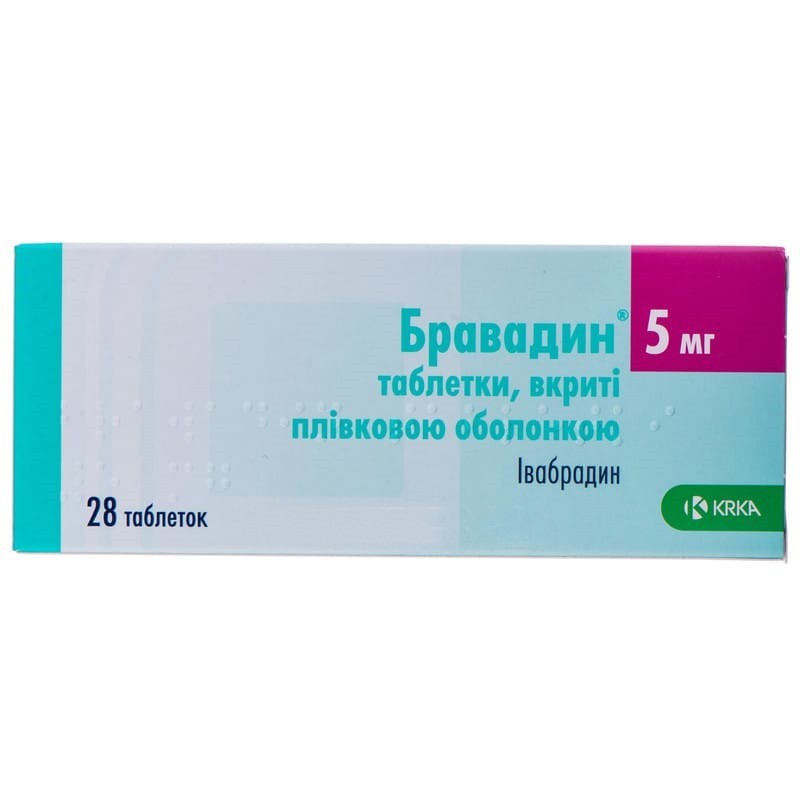



 Secure and encrypted payment processing
Secure and encrypted payment processing We ship to over 40 countries including the USA, UK, Europe, Australia and Japan
We ship to over 40 countries including the USA, UK, Europe, Australia and Japan Guaranteed refund or reship if you haven't received your order
Guaranteed refund or reship if you haven't received your orderBravadin tablets are indicated for:
Active substance: ivabradine;
1 coated tablet contains 5 mg of ivabradine, which is equivalent to 5.39 mg of ivabradine hydrochloride;
Excipients: lactose, magnesium stearate, corn starch, maltodextrin, colloidal silicon dioxide, hypromellose;
Film sheath: hypromellose, titanium dioxide (E 171), talc, propylene glycol, iron oxide yellow (E172), iron oxide red (E 172).
The drug Bravadin is prescribed for adults.
Tablets are taken orally twice a day: in the morning and in the evening with food.
The tablet of the drug Bravadin 5 mg can be divided into equal parts.
Contraindicated.
Contraindicated.
Carefully.
An overdose of ivabradine can lead to severe and prolonged bradycardia (see section "Adverse reactions"). Severe forms of bradycardia require symptomatic therapy in specialized institutions. In case of bradycardia with impaired hemodynamic parameters, the use of intravenous beta-stimulating agents such as isoprenaline is recommended. In extremely severe cases, you can consider the temporary use of a pacemaker.
The simultaneous use of ivabradine and cardiovascular and non-cardiovascular drugs that extend the QT interval should be avoided, since a decrease in heart rate can enhance the prolongation of the QT interval. If necessary, such a combination should ensure close monitoring of cardiac activity.
The simultaneous use of ivabradine and such strong CYP3A4 inhibitors as antifungal drugs related to azoles (ketoconazole, itraconazole), macrolide antibiotics (clarithromycin, erythromycin for oral administration, josamycin, telithromyzin), non-rifonivirin-protease inhibitors (non-rifonavirafid) see section "Contraindications"). Strong CYP3A4 inhibitors such as ketoconazole (200 mg / day) and josamycin (1 g 2 times a day) increase the average concentration of ivabradine in blood plasma by 7-8 times.
Keep out of the reach of children.
Shelf life is 2 years.